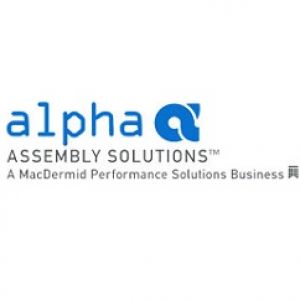How to Select the Best Solder Wire for Component Attachment
Posted by Alphaassembly on January 27th, 2017
The right solder wire must be thin enough to prevent over-application, but thick enough so you do not have to frequently gather more from the coil. Solder thickness will affect convenience and feed rate. Likewise, it will affect the amount of flux to be delivered to your application. Keep in mind that flux is a weak acid and it removes oxides to let the solder stick to the metal. Being crucial to the soldering process, it is already built into the common wire solder’s core. It will help the solder to spread while reducing surface tension, and transfer heat. Moreover, it serves as a protective shield to prevent oxygen from touching the metal until it is displaced by the solder.
Consider the following tips for selecting the best solder wire for component attachment:
• Tin-lead or rosin-cored - The 60/40 (tin-lead), 63/37, or the 1/32 rosin-cored solder are suitable for most small electronics. A no-clean solder may not be necessary unless required by your electronics project, but you can consider a regular rosin-cored solder for most applications, since it does not require any cleaning.
• Going lead-free? - Lead-free solder wires are becoming increasingly popular to improve the safety of electronic products and protect the environment. When going for lead-free solder wire, look for alloys that are at least 96.5 percent tin, 0.5 percent copper, and 3 percent silver.
• Consider the thickness – Most manufacturers provide a good amount of flux in the wire, but if it is extremely thin, there may not be enough for cleaning the iron tip or the joint. Hence, consider a thicker gauge solder wire to periodically clean the tip, especially if the solder is thin.
• Determine the flux type and amount – Solder will not merely freeze or harden on a joint like a glue. It creates a metallurgical bond by chemically reacting and dissolving with the base material. All metals oxidize because of air, causing an oxidized layer that will not let the solder bond or wet properly. For hand soldering applications, go for rosin mildly activated (RMA), no-clean, water soluble, and rosin activated (RA). J-STD-004, a new classification system, has classified fluxes by activity, halide content, and material.. Keep in mind that the more active or aggressive the flux is, the harder and faster it can eliminate oxides.
About the Author:
Alpha Assembly Solutions Inc. is a premier company engaged in the development and manufacture of high quality electronics assembly materials. Since the year of its inception, way back in 1872, the company has played its role on the frontline of innovation, bringing many first-to-market products to the fore thereby, creating a premier niche for itself in the market.


